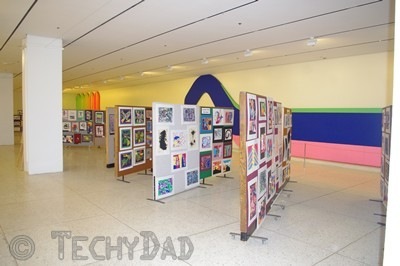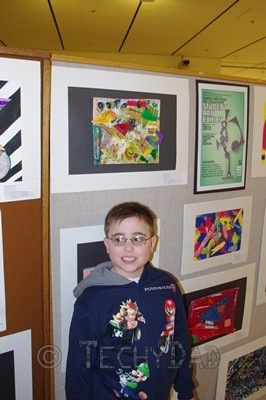Visiting The Museum of Innovation and Science in Schenectady
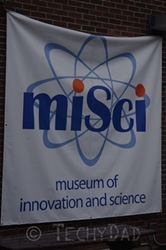
 On Wednesday, I briefly wrote about the Museum of Innovation and Science (aka MiSci) in Schenectady. Specifically, about how the ring of fire made my mother-in-law look like a dandelion. The Bridge-Of-Fire was just one of the many exhibits in the museum, however.
On Wednesday, I briefly wrote about the Museum of Innovation and Science (aka MiSci) in Schenectady. Specifically, about how the ring of fire made my mother-in-law look like a dandelion. The Bridge-Of-Fire was just one of the many exhibits in the museum, however.
In fact, there are so many exhibits and they are so much fun and so interactive, that the first time I went I didn’t take photos of many of them. That’s saying something because I take photos of EVERYTHING! Random flowers, food as I’m cooking it, the sky, food before I eat it, my kids… everything. And yet, I was having so much fun with my kids and their cousins the first time we went to MiSci, that I forgot to retreat behind the camera lens from time to time.
First up is Seeing. This was all about optical illusions and exploring how we see the world.

For example, this sculpture looks one way when viewed up close and another when viewed from afar:

There was another spot where you could toss a basketball into a net. Easy enough until you put a pair a lenses in front of your eyes. When you did this, it shifted your vision making you think that the net wasn’t where it actually was. The end result was that shots that you aimed right for the net wound up way off course. (NHL, thwarted the illusion, however, by all-too-quickly adapting his shots to compensate.)
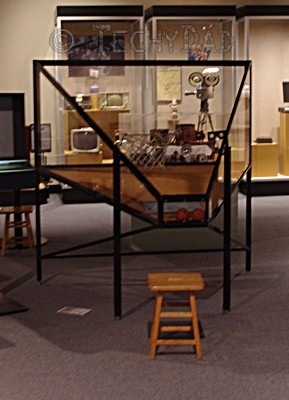
Another station let you look into a viewing hole where you see a series of chairs. Looking in from the see-through side, however, reveals a different sight.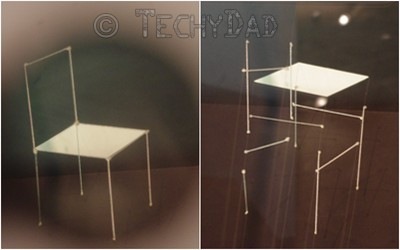
Other stations showed how eyes see objects (upside down – the brain flips them right-side up), how the apparent size of an object is altered its distance, and so much more.
Sadly, that exhibit has moved on. Thankfully, though, other exhibits will take its place. (Including Dinosaurs! in a month.)
Other exhibits at the museum showed off other properties of science, such as the wonders of magnetism, and technology (such as the evolution of the camera).

One of my favorites, though, was the planetarium show. We sat in the seats and the host began to talk about the show. Then, she began it by showing the Sun in the sky. (One of the few times when you can stare at the Sun and not hurt your eyes.) Unfortunately, you can’t see the stars during the day since the Sun’s light overwhelms them so much. Fortunately, a planetarium is a time machine of sorts and our host sped up time until the Sun set below the horizon. Little by little, the sky darkened and the stars began to come out. Eventually, we were able to make out some constellations.

The biggest impact, however, came when our host pointed out that the stars were still being overwhelmed. Not by the Sun, however, but by the lights from the city around us. Again, we were lucky and she was able to turn these off. Now, I’ve never had the fortune of seeing the stars from a location devoid of light pollution. When the city lights were turned off, suddenly thousands of stars appears overhead. There were so many of them, it felt like they were burning into my eyes. It was an amazing sight.
In the end, we have had two fantastic times at MiSci and can’t wait to go back again. Thanks to getting a membership, we can not only go back as many times as we like, but we can go to other museums like the Museum of Science in Boston, the Buffalo Museum of Science, or the Intrepid Sea, Air, and Space Museum in New York City. It looks like we’re going to have a science museum filled summer and we couldn’t be happier!

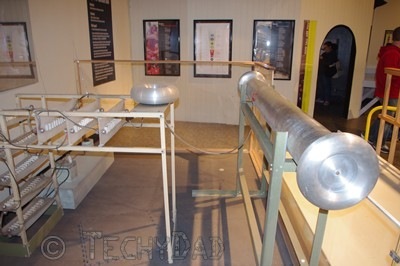

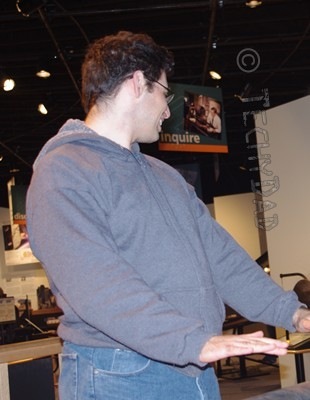
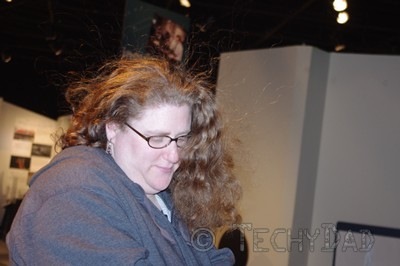
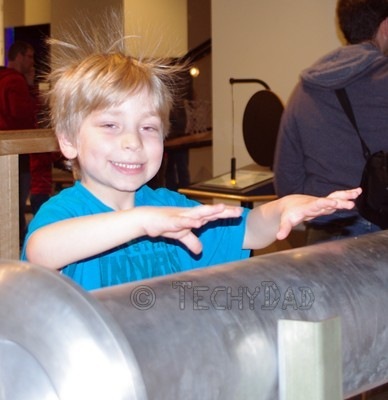
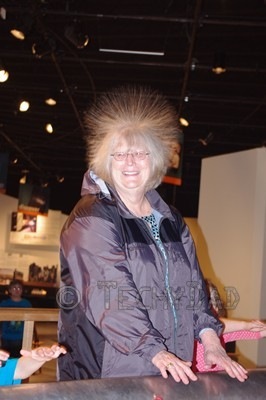

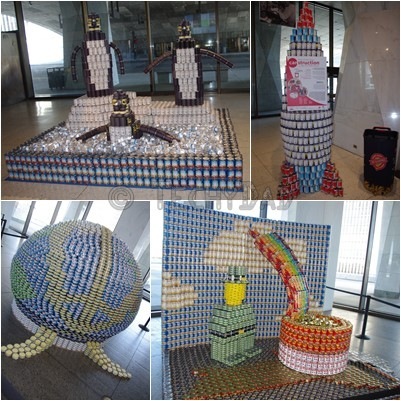
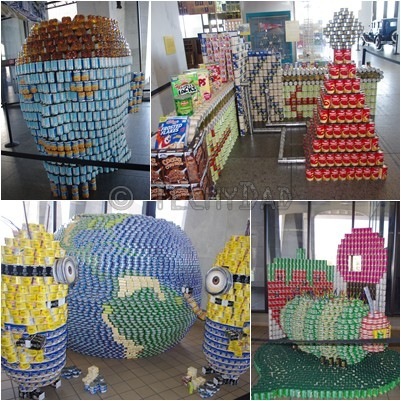

 A few days ago, NHL lamented about how rough his life was because I was sending him to bed without him having dessert. (Dessert isn’t an "every night" proposition in our house, but the kids keep lobbying for it to be a required part of dinner.) This "hard knock life" moment was contrasted with a program we attended at the New York State Museum. During the various components of this program, NHL got to see just what immigrants (especially Jewish immigrants) who came to America in the early 1900’s had to deal with.
A few days ago, NHL lamented about how rough his life was because I was sending him to bed without him having dessert. (Dessert isn’t an "every night" proposition in our house, but the kids keep lobbying for it to be a required part of dinner.) This "hard knock life" moment was contrasted with a program we attended at the New York State Museum. During the various components of this program, NHL got to see just what immigrants (especially Jewish immigrants) who came to America in the early 1900’s had to deal with.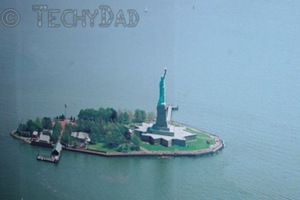 Once the weary travellers arrived in America, they would be processed at Ellis Island. Many would get through, but sometimes individuals would be identified as being ill. (After all, crowded boat + "no facilities" + no medical care + long trip equals illnesses running rampant.) If you were marked at sick, you would be put on a boat back home. It didn’t matter if your entire family had gone through already. Children would be sent home by themselves while their parents would be let through.
Once the weary travellers arrived in America, they would be processed at Ellis Island. Many would get through, but sometimes individuals would be identified as being ill. (After all, crowded boat + "no facilities" + no medical care + long trip equals illnesses running rampant.) If you were marked at sick, you would be put on a boat back home. It didn’t matter if your entire family had gone through already. Children would be sent home by themselves while their parents would be let through.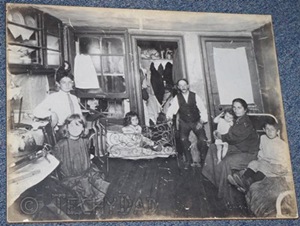 If the travellers were admitted into America, they didn’t face "streets paved with gold." Instead, they would get to share a tiny apartment with 6 other people. Four of those apartments would share a single bathroom. There would also be a language barrier (which one presenter simulated by speaking to us for over five minutes in fluent Hebrew while we looked puzzled).
If the travellers were admitted into America, they didn’t face "streets paved with gold." Instead, they would get to share a tiny apartment with 6 other people. Four of those apartments would share a single bathroom. There would also be a language barrier (which one presenter simulated by speaking to us for over five minutes in fluent Hebrew while we looked puzzled).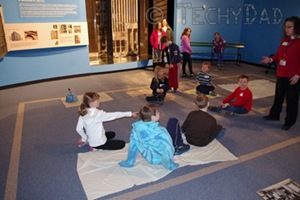 This presentation led to NHL and me talking about how he would feel about being forced to work like this. NHL is a big early bird, frequently waking up at 5:30am, but were we living in this time, he would need to wake up as much as an hour earlier. In addition, while he goes to sleep at 8pm now, were he working like the immigrants did, he wouldn’t get to sleep until after 11pm.
This presentation led to NHL and me talking about how he would feel about being forced to work like this. NHL is a big early bird, frequently waking up at 5:30am, but were we living in this time, he would need to wake up as much as an hour earlier. In addition, while he goes to sleep at 8pm now, were he working like the immigrants did, he wouldn’t get to sleep until after 11pm. After this presentation, NHL not only came away having learned about a big part of our history. Perhaps even better, he left with a renewed appreciation for his own life. He gets to sleep in a comfortable bed, the extent of his "work" is homework for school, has toys to play with, and has plenty of room to move around and play. His life is infinitely better than that of our immigrant ancestors. Of course, were it not for them leaving everything they’ve ever known behind and braving unimaginable hurdles, our lives would not be as good as they are.
After this presentation, NHL not only came away having learned about a big part of our history. Perhaps even better, he left with a renewed appreciation for his own life. He gets to sleep in a comfortable bed, the extent of his "work" is homework for school, has toys to play with, and has plenty of room to move around and play. His life is infinitely better than that of our immigrant ancestors. Of course, were it not for them leaving everything they’ve ever known behind and braving unimaginable hurdles, our lives would not be as good as they are.